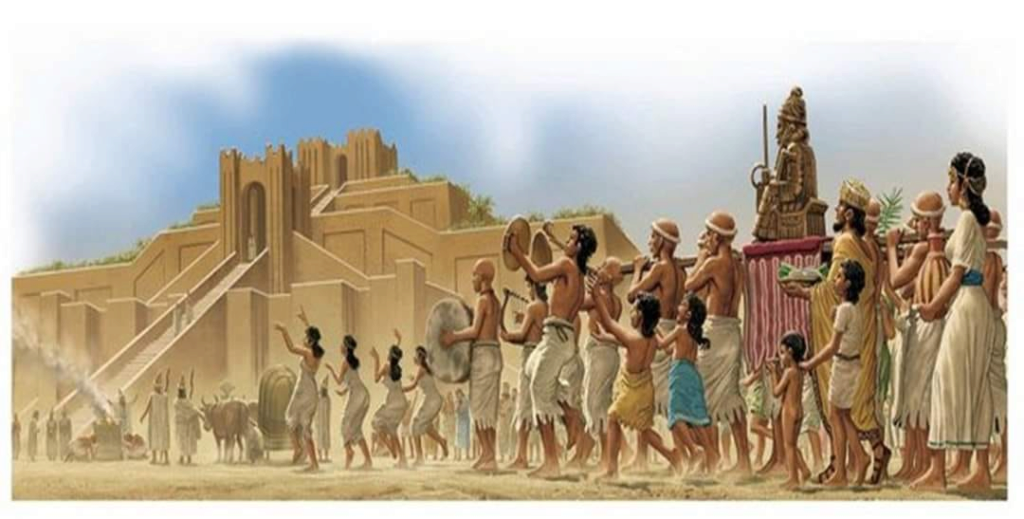The holiday of Akitu is “Nisan 1” (April 1).

It is (the Babylonian New Year - and the Syrian New Year in general)
Since the third millennium BC, the inhabitants of Mesopotamia have been celebrating New Year's with the beginning of agricultural work in April
The celebrations continue for twelve days
These are sacred celebrations in which it is forbidden to scold children, punish slaves, carry out daily chores, or call to court.
The first four days were preparatory, during which plays were presented and myths were told.
On the fifth day, a large procession departs from a temple near Babylon, mourning with tears and wailing the god Tammuz who is imprisoned in the underworld.
On the sixth day, residents travel to major cities and stay with their relatives.
On the seventh day, the god Tammuz was resurrected, accompanied by his wife Ishtar.
On the eighth day, the god Tammuz leaves the temple of Esagila to another temple, where the king and his entourage await him.
On the ninth day, the god Tammuz moves the house of Akito (the house of sacrifices), where sacrifices are made of pigs (they were believed to be the enemy of the gods).
On the night of the tenth and eleventh, the entire country was celebrating New Year’s Day.
On the twelfth day, preachers, readers, artists, and singers were active, and the day concluded with the wedding of the god Tammuz, where the king himself crowned him.
Thousands of years have passed since we celebrated the holidays of April and New Year
However, the same images of this holiday are still accepted by most of the peoples of the earth.
Just as it was happening in Babylon, it is happening now in various countries.
It decorates the tree that represents the advent of modern times and renewed happiness.
Season's greetings
Source: websites

